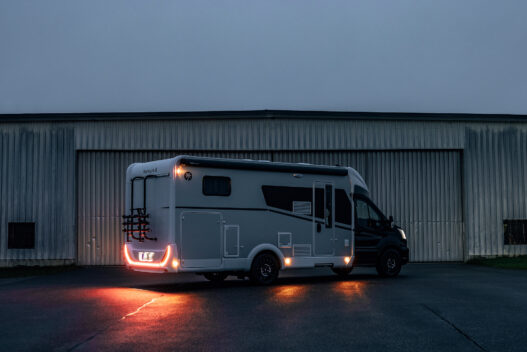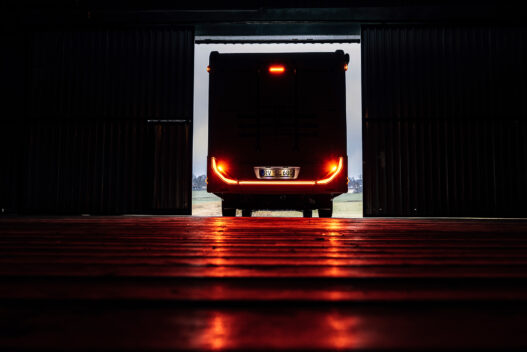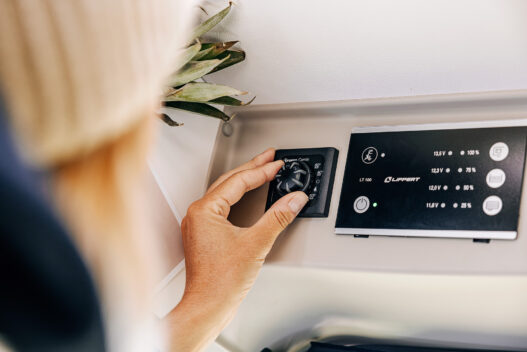If you are not taking your camper on winter tours, do make sure to prep it for the longer resting period and winterize it. What to drain and what to fill? What to turn off and how? Find out here:
Interior
It’s up to you whether you want to polish your camper and give it an extra shine. However, it is crucial to remove anything that could develop even the slightest odor or invite mice and vermin. So, clear out all food, vacuum or wipe out crumbs, defrost, clean and dry the fridge. Then open the doors of all cupboards so that the air can circulate, and the temperature is distributed more evenly. Also make sure that the cushions and mattresses are well ventilated – you can either prop them up or put something beneath them. It’s also recommended to remove any absorbent materials (e.g. toilet paper) from your camper during the colder season.
Exterior
Make sure to also give the outside of your vehicle a good clean (including the roof, underside, and wheels). Check for any minor damages that you can fix or repaint to prevent rust. Afterwards, wax your camper and treat the rubber seals with a special care product.
Water
It is super important to empty both the boiler and the water tank (including gray water). Leave the water tank lid open so that the tank can dry correctly. The same applies for all the water pipes, up to the shower head. Open the taps halfway between cold and hot, and then switch off the water pump. Thoroughly clean the drinking water system with a suitable cleaning agent and top off the antifreeze, coolant and windshield washer system.
Electricity
All electronics must be switched off, disconnect electricity and gas as well as the on-board battery to prevent it from draining slowly. But be careful: check again that all devices are switched off before you disconnect the battery – then first remove the negative terminal and then the positive terminal. If you leave your camper outside or in a cold building, it’s better to remove the battery and store it at room temperature. The same goes for any electronic devices (from hairdryer to kitchen appliances).
Gas
Finally, turn off the gas valves, disconnect the gas bottle from the vehicle supply and close the bottle with the protective cap. Depending on where you park your camper, you can leave the bottles in the gas locker or store them in a safe place. Check whether it is prohibited to store gas bottles at your winter location.
Parking
Make sure to park your camper horizontally, then shift into gear and release the handbrake. Increase the tire pressure by about 0.5 bar to reduce the load on the tires and account for the gradual loss of air.
If possible, protect your vehicle with a cover, but make sure it is permeable to air and allows ventilation – so don’t use a plastic cover.
If you have the opportunity, check on your camper from time to time: open the doors and ventilate it. And if you haven’t removed the battery, you can recharge it every couple of months.



